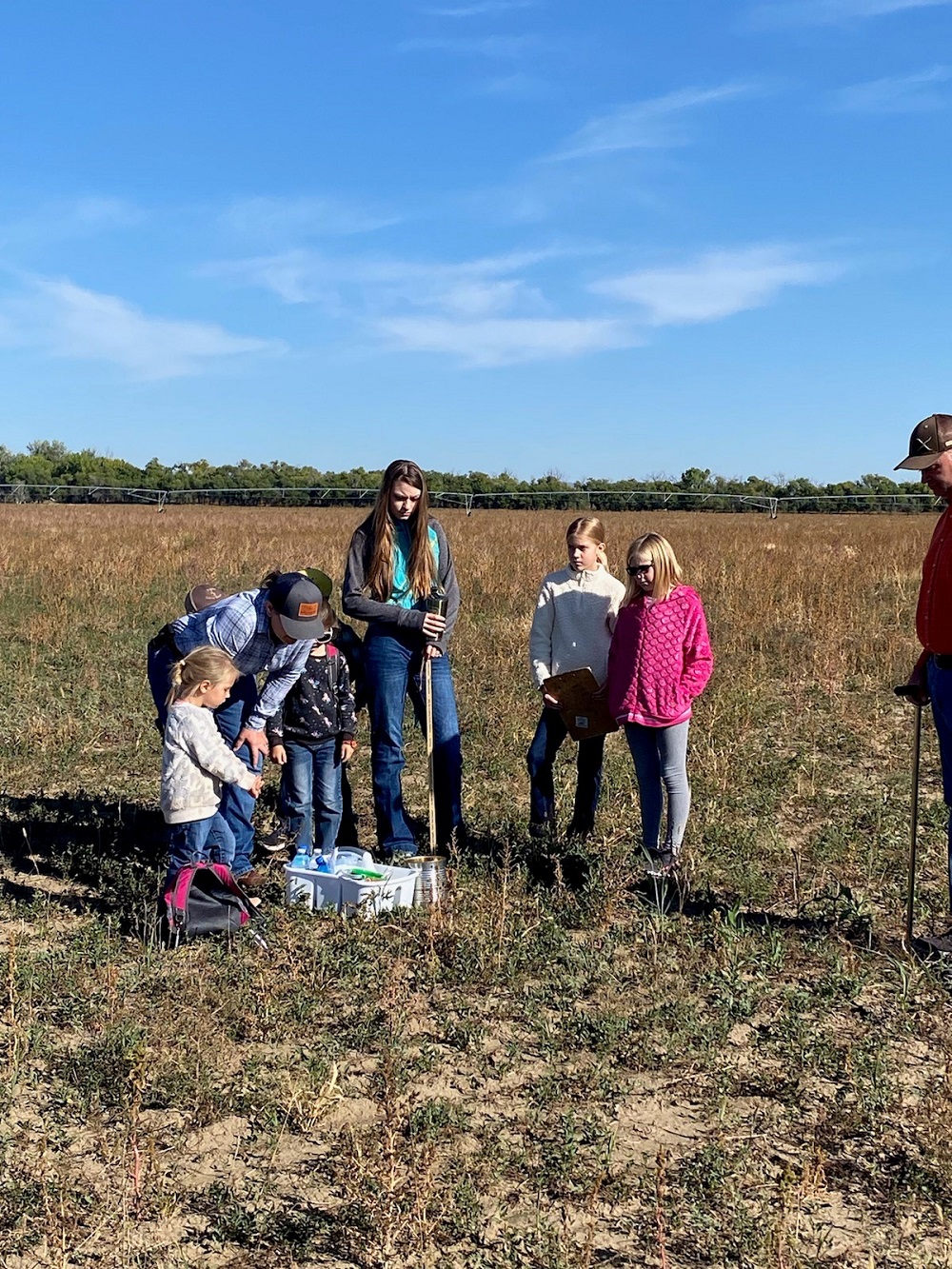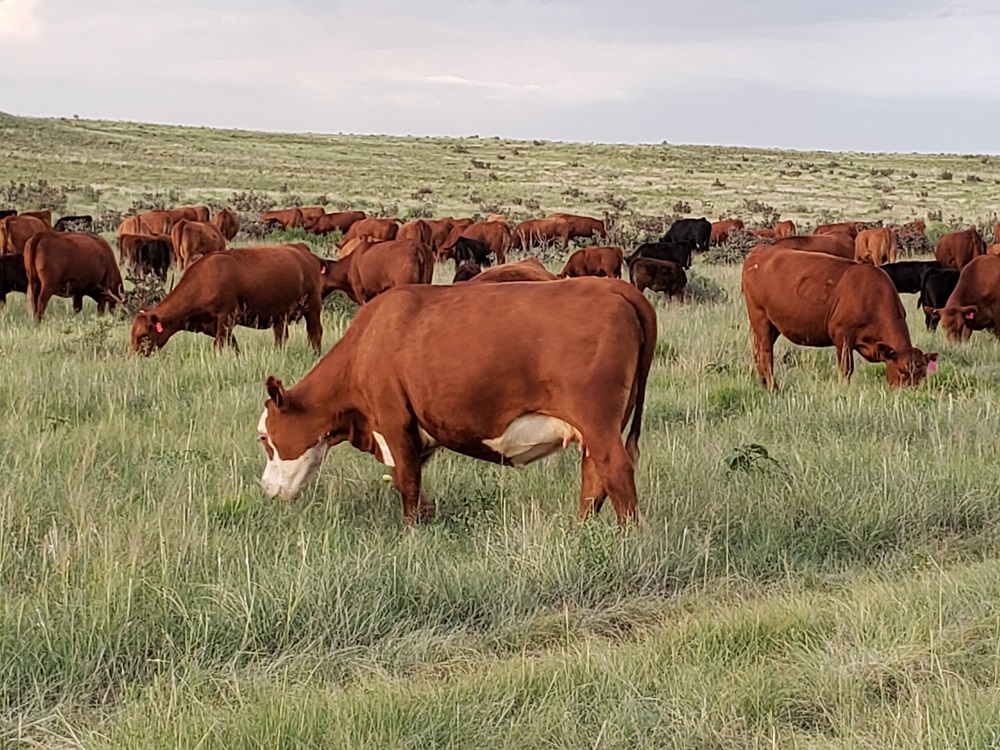FEATURE STORY
By Kristie Garcia
March 4, 2022
New Mexico agriculturalists benefit from state’s Healthy Soil Program
When Kim Barmann talks about the land she manages on the CS Ranch near Cimarron, she can’t help but bring up soil health.
“I’m such an advocate of soil health, and we were very grateful for the opportunity to have been chosen as one of the Healthy Soil Program projects,” said Barmann.
The CS Ranch was awarded funding through the New Mexico Department of Agriculture’s (NMDA) Healthy Soil Program during the 2019-2020 pilot year of the program. Created in 2019, the purpose of the Healthy Soil Program is to promote and support farming and ranching systems and other forms of land management that increase soil organic matter, aggregate stability, microbiology and water retention to improve the state’s soil health, yield and profitability.
During its first three years, the program has awarded approximately $600,000 to 62 on-the-ground projects to improve soil health. NMDA has allocated other program funding toward soil health education, outreach, training and research.
NMDA awarded funding to the CS Ranch for its “Using Cover Crops/Livestock/Adaptive Grazing to Restore Soil Health” project. The project addressed an old alfalfa/brome hay field that had been farmed/hayed since the 1930s but had declined after irrigation stopped over a decade ago.

Although drought prevented the project from reaching its full potential, Barmann said the funding was helpful, and she is thankful the state is realizing the importance of soil and the environment.
“The funding helped us get some roots in the ground, into these old fallow fields that were once hayed,” she said. “We had some wonderful grass growth, considering we had two years of drought with fewer than four inches of rain on this part of the ranch. Our big push is to eventually get cattle in to graze.”
Barmann said education is a huge part of the CS Ranch.
“As part of the non-profit Soil Health Academy, we’ve hosted two soil health schools and will host another one in May,” she said. “We’ve also helped organize numerous workshops in the county. Anytime we can get people to come learn in person is a great opportunity.”
She hopes the Healthy Soil Program will not only continue but grow. “We need so much momentum with this program right now.”
Healthy Soil Program funding may be used for agricultural projects in New Mexico that focus on one or more of five basic soil health principles named in the Healthy Soil Act: keeping the soil covered; minimizing soil disturbance on cropland and minimizing external inputs; maximizing biodiversity; maintaining a living root; and integrating animals into land management, including grazing animals, birds, beneficial insects or keystone species, such as earthworms.
Grants are available to New Mexico’s Eligible Entities and Individual Applicants to implement soil improvement practices on working lands. As defined in the Healthy Soil Act, Eligible Entities are “local governmental [entities] with proven land management capacity to support healthy soil” and include nations, tribes and pueblos; land grants; acequias; soil and water conservation districts (SWCDs); and New Mexico State University’s Cooperative Extension Service. Individual Applicants include farmers and ranchers, as well as businesses and nonprofits engaged in farming, ranching or other forms of land management and must be backed by either a SWCD or a nation, tribe or pueblo.
The CS Ranch applied for funding as an individual project through Colfax SWCD. NMDA has awarded funding to many other on-the-ground projects, including an individual project by M-Scar Ranch, which also applied for funding through Colfax SWCD.
Mira and Kevin Merritt of the M-Scar Farm & Ranch in Maxwell applied for funding for the 2019-2020 pilot year for their “New Beginnings: Use of Ground Cover and Livestock to Improve Soil Health” project, which utilized both warm- and cool-season seed mixes to plant cover on both cropland and pastureland. The integration of livestock added fertilizer and incorporated organic matter into the ground.

Mira Merritt said the biggest success story has been the bale grazing, setting out large square bales during the winter feeding season.
“We had so much bare ground, it was one big prairie-dog town,” said Merritt. “The bale grazing allowed us to cover the ground and integrate our livestock. We used hay grazer and grass/alfalfa bales to cover the ground and allow the livestock to incorporate the waste into the soil. In the summer, we saw a variety of new plant species growing where we had bale grazed, which was exciting to see. It has been an advantage to our soil, as we’ve noticed it in our sample results.”
The Merritts used the project as a backdrop for educating children in the ways of generating healthy soil as a viable agricultural setting for future generations. The first year, they hosted 4-H students.
“We had a soil conservationist show the kids how to calculate dry matter forage, identify plant species and how to conduct a water infiltration test,” said Merritt. “The students were able to see increased moisture and organic matter on the bale-grazed land. We did a pre- and post-quiz about the five soil health principles, and it was amazing to see what they learned.”
The second year, the Merritts hosted students from a home-school cooperative for a hands-on experience. “We had the kids take soil samples, and they learned how to assess soil and identify plant species,” said Merritt.
The Healthy Soil Program continually improves its outreach efforts, engagement and efficiency. NMDA hosted several webinars earlier this year to show potential applicants the steps to take to be considered for a grant.
New Mexico Agriculture Secretary Jeff Witte said the NMDA team is here to help potential applicants.
“Our goal is to have people come away from these webinars knowing the few simple steps they can take early on in order to succeed in the application process later,” said Witte.
Each year NMDA assembles a technical review committee – comprised of external partners in soil health, agriculture and Eligible Entity communities – to review grant applications. In 2022, NMDA will accept applications until May 12 in search of which on-the-ground projects to fund in fiscal year 2023. For more information, visit the NMDA website, email hsp@nmda.nmsu.edu or call 575-646-2642.
Between improvement of the grant process each year and the emergence of new public-private partnerships, the Healthy Soil Program will continue to be far-reaching.
###
